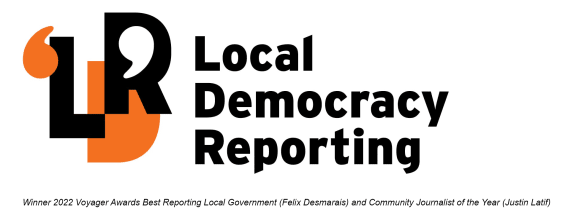![Mount Maunganui from the top of Mauao. Photo: Photo: Stephanie Martelli. [via LDR Single use only]](https://media.rnztools.nz/rnz/image/upload/s--BHtdg6hW--/ar_16:10,c_fill,f_auto,g_auto,q_auto,w_1050/v1696654102/4L1I2NH_Mount_Maunganui_Stephanie_Martelli_jpg?_a=BACCd2AD)
Mount Maunganui from the top of Mauao. Photo: Stephanie Martelli
Mount Maunganui's unique beach vibe could be ruined by more housing, residents and businesses say.
Concerns about traffic congestion, pollution and a lack of infrastructure were raised on day four and five of the Tauranga City Council (TCC) Plan Change 33 hearings.
Mount resident Barry Brown said more housing would affect the way people lived in the Mount.

Some of the experts' technical evidence did not "get the vibe" of the seaside suburb and any change should be carefully considered, Brown said.
![Mount resident Barry Brown said the expert evidence didn't “get the vibe” of the Mount. Photo: Alisha Evans/SunLive. [via LDR Single use only]](https://media.rnztools.nz/rnz/image/upload/s--rHs1yjdM--/ar_16:10,c_fill,f_auto,g_auto,q_auto,w_576/v1696654102/4L1I2NH_Barry_Brown_scaled_jpg?_a=BACCd2AD)
Barry Brown said the expert evidence did not "get the vibe" of the Mount. Photo: Sunlive / Alisha Evans
The plan change was in response to the government's changes to the Resource Management Act (RMA) that allows for greater intensification in urban areas.
Under the plan, building heights in downtown Mount Maunganui could rise. Heights of six storeys could be allowed in the shopping area and within 400 metres of it, then four storeys between 400-800m of the shops.
Whareroa Marae and Ngati Kuku environmental representative Joel Ngātuere said it was irresponsible to allow more people to live in an area where "everybody was slowly being poisoned" from air pollution.
![Whareroa Marae environmental representative Joel Ngātuere said it was irresponsible to allow more people to live in the Mount. Photo: Alisha Evans/SunLive. [via LDR Single use only]](https://media.rnztools.nz/rnz/image/upload/s--eP5TRUeO--/ar_16:10,c_fill,f_auto,g_auto,q_auto,w_576/v1696654102/4L1I2NH_Joel_Ngatuere_1_scaled_jpg?_a=BACCd2AD)
Joel Ngātuere said it was irresponsible to allow more people to live in the Mount. Photo: Sunlive / Alisha Evans
The marae on Taiaho Place was surrounded by the Mount Maunganui Industrial area, including the Port of Tauranga.
In July, Te Whatu Ora released a report saying poor air quality in Mount Maunganui was creating significant health risks.
"Industry, traffic, and port activities all contribute to the poor air quality in the Mount Maunganui area," Toi Te Ora medical officer of health Jim Miller said in a statement.
Ngātuere said three people in the community had died from respiratory illnesses, which were believed to be linked to air pollution, in the past three years.
The marae was not anti-industry and knew the port has its place, but "noxious industries and residential can't co-exist", he said.
Ngātuere said he was not opposed to intensification, but a lot of work needed to done before it could happen. This included a belt around heavy industry to buffer it from the residential area.
The council did not have the support of the marae's hapū Ngāti Kuku and Ngāi Tūkairangi for this plan change, Ngātuere said.
In 2020, the marae called for the managed retreat of heavy industry away from their whenua. In February they were told the businesses had existing land use rights under the Resource Management Act so there was no legal reason for their relocation.
Lawyer Kate Barry-Piceno, of Clear the Air, raised a conflict with the Bay of Plenty Regional Council and Port. The council monitors the air quality, but also owns 54 percent of the port.
![Kate Barry-Piceno the Mount was unique and rapid growth needed better consideration. Photo: Alisha Evans/SunLive. [via LDR Single use only]](https://media.rnztools.nz/rnz/image/upload/s--Cu5rhA0T--/ar_16:10,c_fill,f_auto,g_auto,q_auto,w_576/v1696654102/4L1I2NH_Kate_Barry_Piceno_scaled_jpg?_a=BACCd2AD)
Kate Barry-Piceno the Mount was unique and rapid growth needed better consideration. Photo: Alisha Evans / Sun Media
"There's a reason why this community gets pretty hot about the issue of air quality. That's because they feel that the councils are failing them on this issue, and they have for some time."
Barry-Piceno, who is also the Mount Business Association chairperson, said the downtown area had a unique beach vibe.
"It has the feeling of being on holiday. It's very different to other centres around Tauranga."
However, she said problems arose when the Mount became a "domestic mecca" in the 2020 tourist season.
"We were burgeoning at the seams with tourists over the summer. The collapse in our rubbish systems and the smell of sewage on the Mount downtown street was real.
"Those are the aspects where the services that are here and the needs associated with it haven't been addressed.
"The Mount is unique. It needs care. If there's going to be rapid growth here, it needs better consideration."
Jonathon Earles, who represented his neighbourhood of Korowai Street in Arataki, said plan change 33 was "extreme".
![Jonathon Earles said Plan Change 33 was extreme. Photo: Alisha Evans/SunLive. [via LDR Single use only]](https://media.rnztools.nz/rnz/image/upload/s--suitvhO4--/ar_16:10,c_fill,f_auto,g_auto,q_auto,w_576/v1696654102/4L1I2NH_Jonathon_Earles_scaled_jpg?_a=BACCd2AD)
Jonathon Earles said Plan Change 33 was extreme. Photo: Alisha Evans / Sun Media
He felt there was not enough budget to allow for infrastructure and the roads were already congested.
"We're okay with intensification, but we want a more balanced approach."
Submissions were being heard by an independent panel made up of chairperson David Hill and commissioners Vicki Morrison-Shaw, Richard Knott and Fraser Campbell.
The hearings continue on 9 October and 10 October.
Local Democracy Reporting is Public Interest Journalism funded through NZ On Air


